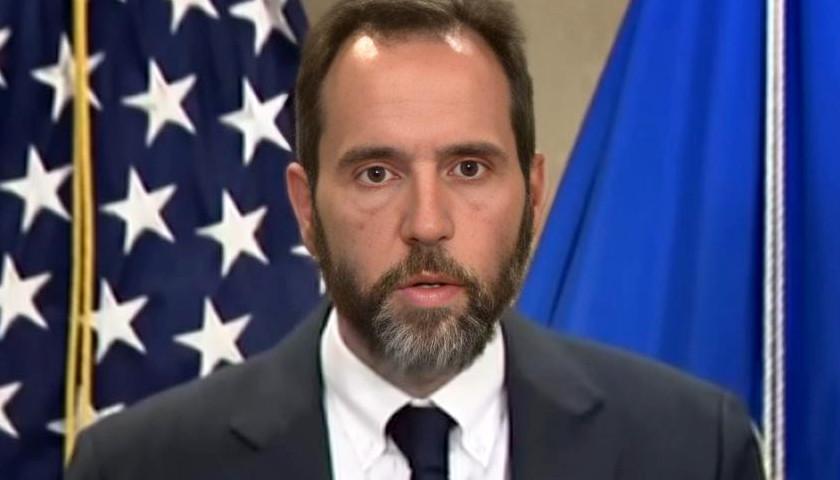Before then-President-elect Donald Trump could even take the official oath of office on January 20, 2017, his critics were already chattering about the possibility of Trump’s tenure in the White House being truncated by means of involuntary removal.
Throughout 2017 and 2018, there has been, and continues to be, spirited discussion by the President’s detractors of the possibility of expelling him from office by means of the impeachment-and-trial process that is found in separate parts of the U.S. Constitution.
One of the most ardent advocates of ousting President Trump has been U.S. Representative Maxine Waters (D-California). Another has been her colleague, U.S. Representative Al Green (D-Texas) who actually went so far as to offer articles of impeachment against the President only to be soundly rebuffed, as recently as January 19, 2018, by a procedural motion-to-table Green’s House Resolution No. 705 with 355 yeas, 66 nays, 3 “present”, and 6 “not voting”.
Prior to the recent November 6, 2018, general election, some members of the U.S. House of Representatives vowed that, if the partisan composition of that body would flip from majority Republican to majority Democrat — which it certainly did on November 6th — efforts to impeach the President would continue, and with renewed vigor. The U.S. Senate, of course, will remain in Republican control for the time being.
But just what does the method of deposing a President from office involve? Those who push for it appear to have a limited understanding of all facets entailed in the procedure and their public rhetoric implies an over-simplification of what is truly a more daunting and multi-step process.
The Constitution’s Article I, Section 2, Clause 5 reposes the power of impeachment exclusively within the U.S. House of Representatives: “The House of Representatives…shall have sole Power of Impeachment”.
By dictionary definition, the term “impeach” means to call into question the integrity of a person, or the validity of a practice, or to charge the holder of a public office with treason or some other crime. However, to “impeach” alone does not remove the holder of such office from the post which he or she occupies.
Conveniently overlooked is the fact that action by the U.S. Senate is also essential. In Article I, Section 3, Clause 6, the Constitution mandates that a trial take place in Congress’ upper chamber:
The Senate shall have the sole Power to try all Impeachments. When sitting for that Purpose, they shall be on Oath or Affirmation. When the President of the United States is tried, the Chief Justice shall preside: And no Person shall be convicted without the Concurrence of two thirds of the Members present.”
Thus far in American history, no President has been successfully involuntarily removed from office, other than by means of the nation’s voters rejecting a President’s bid for re-election and simultaneously choosing someone else to be the country’s new chief executive. Presidents Jimmy Carter (1980) and George H. W. Bush (1992) would be the most recent examples of that.
On August 9, 1974, President Richard Nixon did indeed resign from the Presidency — perhaps as a tactical maneuver before the U.S. House could impeach him and/or the U.S. Senate could try and convict him.
The only President ever to actually go on trial in the U.S. Senate was Andrew Johnson of Tennessee. In 1868, the U.S. House of Representatives did approve articles of impeachment against Johnson. Subsequently, on May 16th of that year, the U.S. Senate failed to convict him on one of the articles, with the 35-to-19 tally in favor of convicting Johnson falling short of the necessary two-thirds margin by only a single vote.
A ten-day recess of the Senate was then called before attempting to convict Johnson on additional articles. That delay did not change the outcome, however, as on May 26th, Senators again declined to convict Johnson on two remaining articles, both by the same 35-to-19 margin. The trial in the Senate was then permanently adjourned and the final result of all of that was that Johnson was deemed “acquitted”.
Hence, any talk about the forced dismissal of our current President requires much more than just partisan posturing by a U.S. House of Representatives that recaptured a modest Democrat majority on November 6th.
– – –
With his decade of work (1982-1992) to gain the 27th Amendment’s incorporation into the U.S. Constitution, Gregory Watson of Texas is an internationally-recognized authority on the process by which the federal Constitution is amended.






My apologies for the omission of President Bill Clinton’s trial in the U.S. Senate during January and February of 1999. The vote among the Senators on the question of convicting Clinton of the charge of perjury was 55 to 45 (a simple majority, but well below the Constitutionally-required two-thirds threshold) and as to the charge of obstruction-of-justice the vote was a 50-50 tie (again, well below the required two-thirds supermajority). With the example of Andrew Johnson, in 1868, I was attempting to illustrate, in the above article the extreme closeness by which Johnson could have been removed from office — but, by a hair, ultimately wasn’t. Johnson’s 1868 case remains the nearest that a sitting President has ever come to being tossed from office. Nevertheless, I missed the mark and I was not clear for which I accept responsibility and do sincerely apologize.
When was this written? I ask because it omits Bill Clinton impeachment and trial. Fred Thompson voted not guilty on the perjury charge, guilty on the obstruction of justice charge.
“The only President ever to actually go on trial in the U.S. Senate was Andrew Johnson of Tennessee.” ????????? Uh, Bill Clinton?